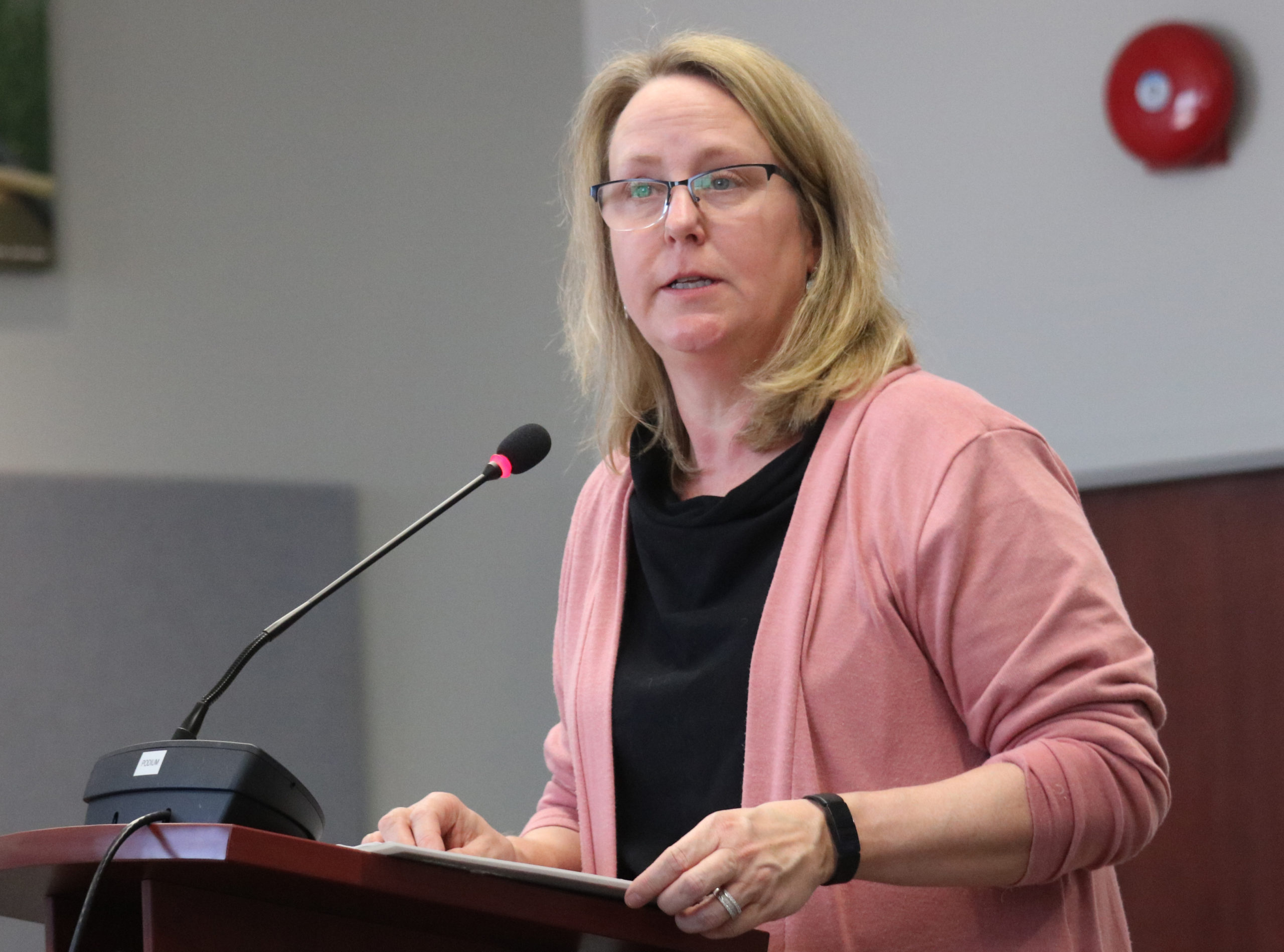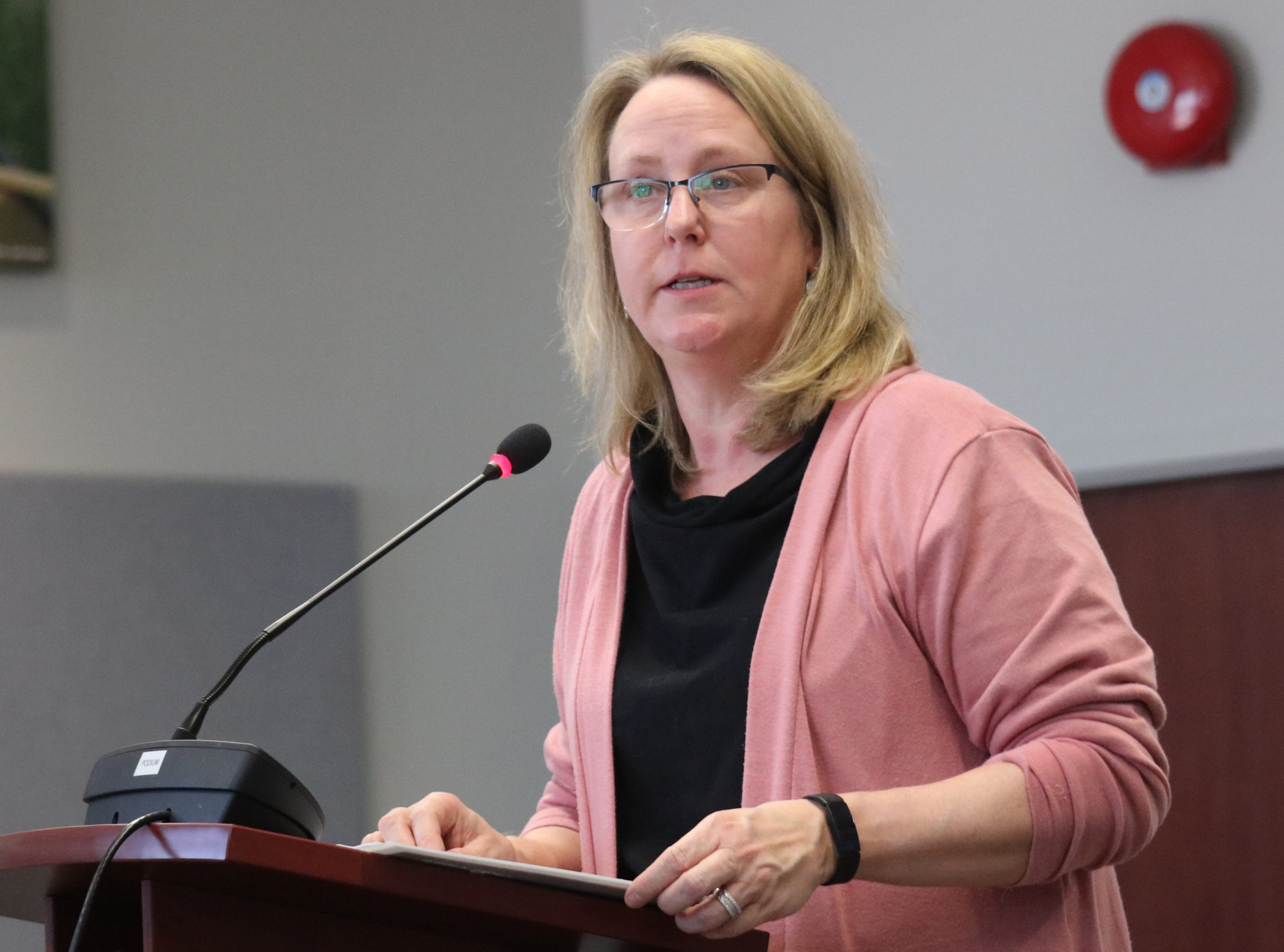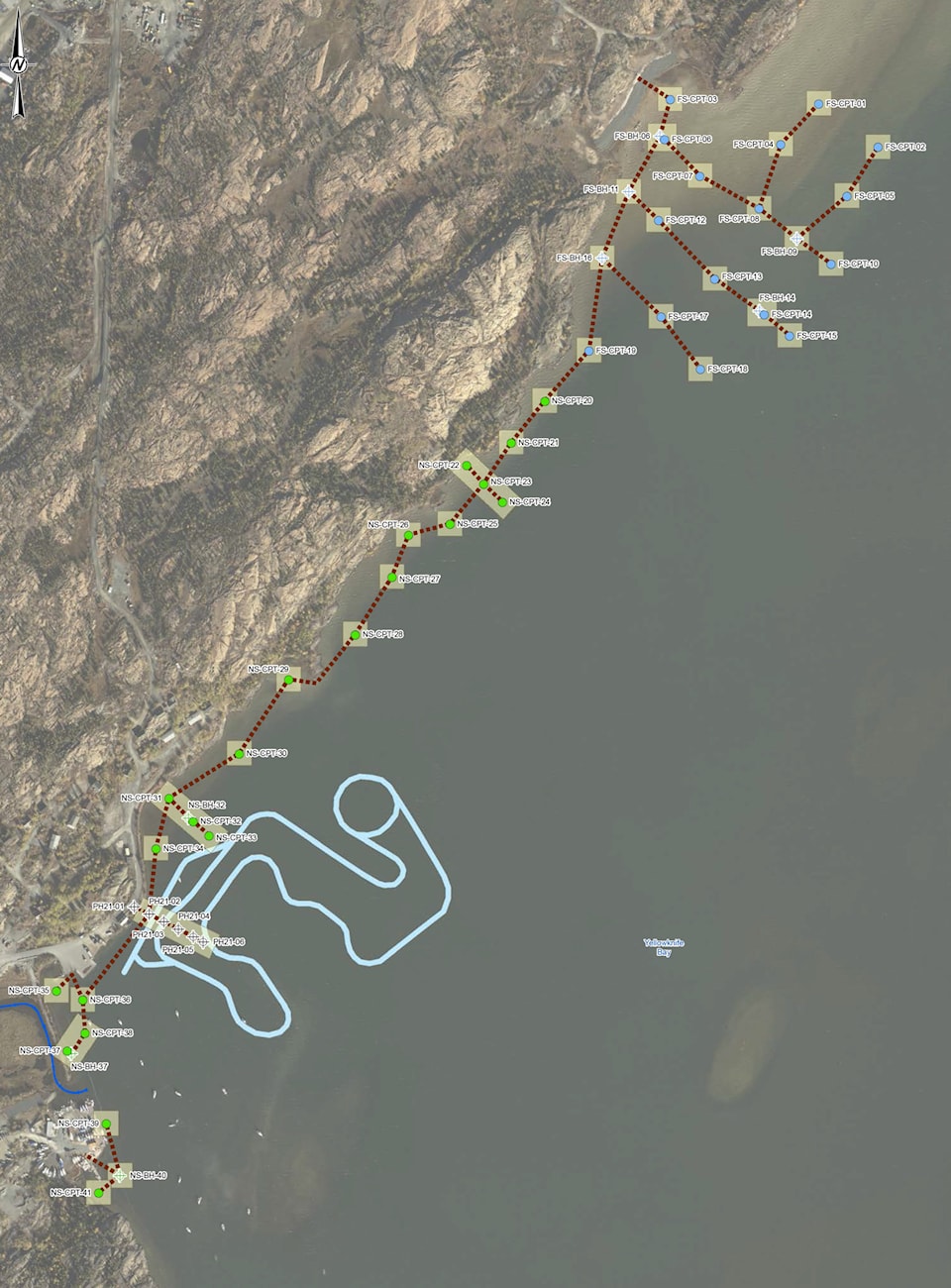The Giant Mine Remediation Project Team gave notice that a winter drilling program started in a number of areas last week.
A winter drilling program began on Great Slave Lake on Feb. 9, which includes a three-week flooding process to strengthen the ice in the area, according to a post made on the Giant Mine website.
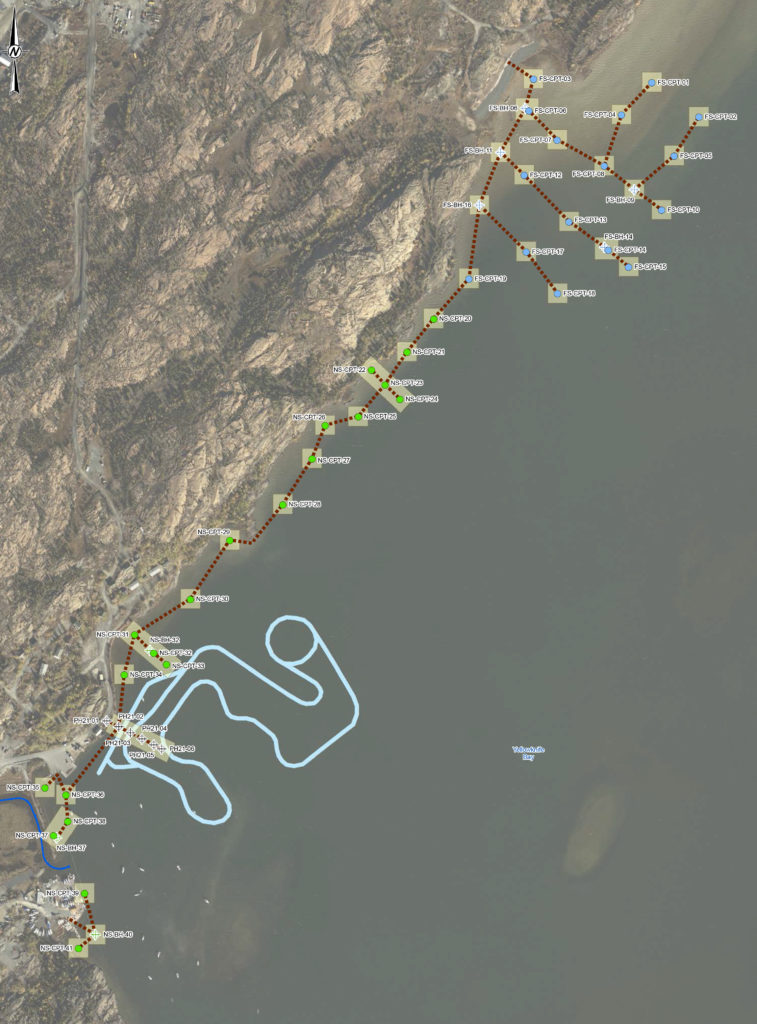
Following this process, the remediation team will begin drilling into the lake bed in March over a three-week period.
“Drilling will give the project team information about the lake bed and its ability to bear weight for a proposed tailings cover,” states the post.
The information is also needed to design a discharge point for the new water treatment plant.
The team has erected safety signage, which the public has been asked to follow. Where there are active work areas, the public is asked to “keep a safe distance.”
Areas impacted will be around the Yellowknife Bay area of the lake by the Great Slave Sailing Club, the Giant Mine boat launch and an area about 1 km north, along the shoreline from the boat launch.
“As the program moves along the shoreline, areas that were drilled and have safely frozen over will be made available for public use,” states the notice.
Creating landfill and blasting
The winter drilling comes ahead of the first of many years of remediation after the Giant Mine Project team received its 20-year type-A water licence and five-year type-A land permit, which were approved by the Mackenzie Valley Land and Water Board and finalized by Northern Affairs Minister Dan Vandal last September.
Natalie Plato, deputy director of the Giant Mine Remediation Project, said that much behind-the-scenes work is taking place in preparation for active remediation to begin in the summer.
“The main construction manager (Parsons Inc.) is beginning to roll out the competitive tendering processes and the project team anticipates contracts awards in early-to-mid-2021 to be able to begin the work in July.”
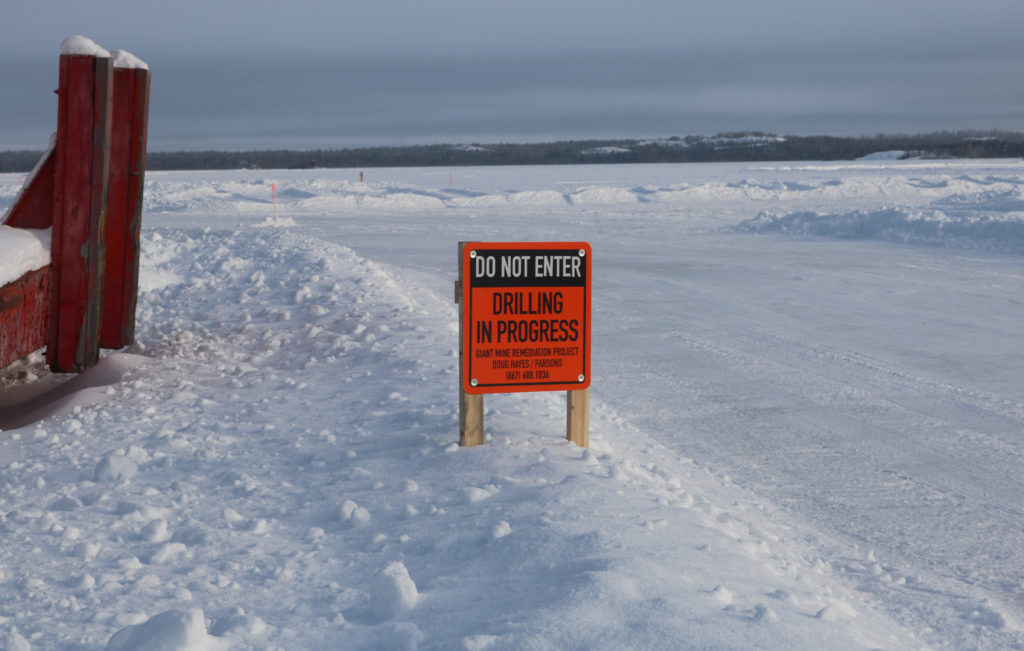
Simon Whitehouse/NNSL photo
Over 2021 and 2022, the project team is planning several construction projects as remediation efforts move forward. Among them will be the building of a landfill that will hold non-hazardous waste.
Work will also involve underground stabilization and construction of four freeze pads.
There will also be rock blasting and work to clear the mine site area and an access road is to be built to support this aspect of the project.
Over the next two years, the project work will also include ongoing operation and maintenance of the effluent treatment plant, dust control, waste management, including temporary hazardous waste storage, sewage and greywater management, temporary road upgrades to facilitate hauling townsite debris to the landfill and townsite deconstruction.
“While this work is ongoing, the project team will also ensure regular care and maintenance activities take place, to keep people and the environment protected as the remediation moves forward,” Plato said.
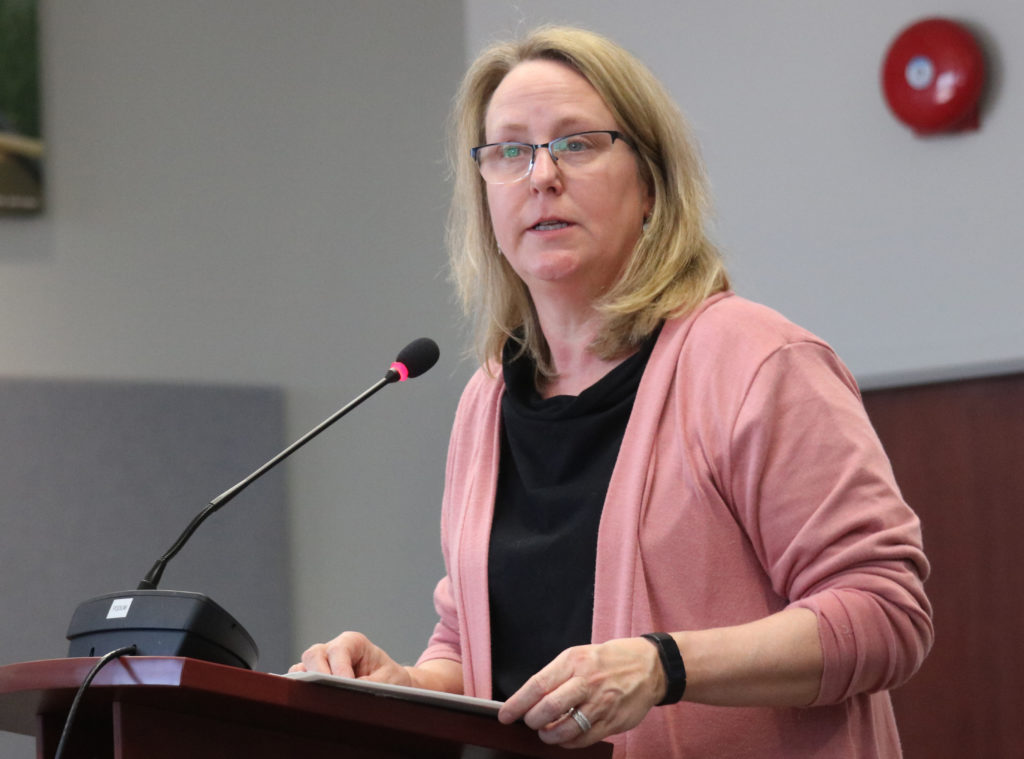
The project team is also expected to abide by Covid-19 guidance from the GNWT and the main construction manager to ensure the health and safety of all parties.
Public input invited
There are several deadlines that the project team has to meet before active remediation begins. In the coming months, the submission of design, management and monitoring plans to the Mackenzie Valley Land and Water Board are required as part of the regulatory process.
The Arsenic Trioxide Frozen Shell Management Plan and Freeze Containment Plan, which the public has until Feb. 19 to review and provide input for, must also be submitted to the board to finalize.
By the end of February, the project team expects to submit the following management and monitoring plans for public review: water, waste, dust, borrow and explosives, and erosion and sediment control, Plato stated. Design plans for public review by the end of February will address underground and the non-hazardous waste landfill.
All plans will continue to be posted on the Mackenzie Valley Land and Water Board's online review system for public review and will be uploaded to the public registry once the review process is complete.
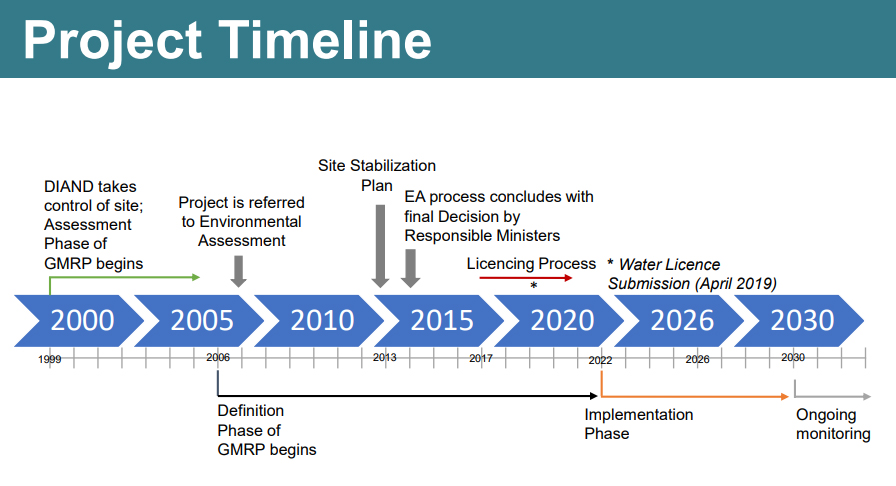
image courtesy of the City of Yellowknife
Annual forum
An annual public forum for the project will be held virtually on March 2 that will allow the team to provide information on various developments, including work expected to take place in 2021.
There will also be updates on work and engagement efforts that took place in 2020 as well as information around regulatory processes and the water licence and other milestones.
To participate, the public is asked to register by emailing the project team at aadnc.giantmine.aandc@canada.ca.
